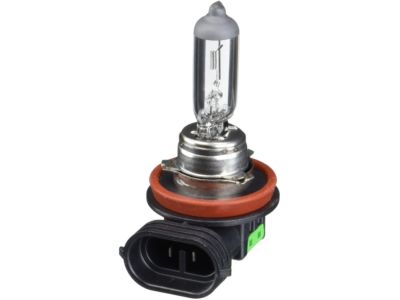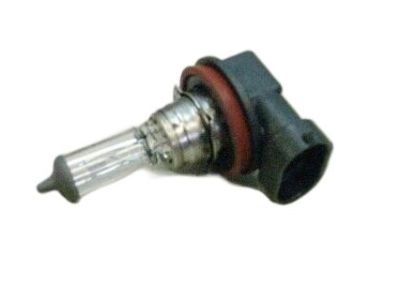×
- Live Chat
- 1-888-726-6993

My Garage
My Account
Cart
Genuine Nissan Altima Fog Light Bulb
Fog Lamp Bulb- Select Vehicle by Model
- Select Vehicle by VIN
Select Vehicle by Model
orMake
Model
Year
Select Vehicle by VIN
For the most accurate results, select vehicle by your VIN (Vehicle Identification Number).
14 Fog Light Bulbs found
Nissan Altima Bulb
Part Number: 26296-9B92B$23.47 MSRP: $32.33You Save: $8.86 (28%)Ships in 1-2 Business DaysNissan Altima Bulb
Part Number: 26296-8990A$23.47 MSRP: $32.33You Save: $8.86 (28%)Ships in 1-2 Business DaysNissan Altima Bulb
Part Number: 26296-89947$23.47 MSRP: $32.33You Save: $8.86 (28%)Ships in 1-2 Business DaysNissan Altima Bulb
Part Number: 26296-8990D$23.47 MSRP: $32.33You Save: $8.86 (28%)Ships in 1-2 Business DaysNissan Altima Bulb
Part Number: 26296-89946$23.47 MSRP: $32.33You Save: $8.86 (28%)Ships in 1-2 Business DaysNissan Altima Bulb
Part Number: 26296-9B902$24.31 MSRP: $33.48You Save: $9.17 (28%)Ships in 1-3 Business DaysNissan Altima Bulb
Part Number: 26296-5Z000$23.47 MSRP: $32.33You Save: $8.86 (28%)Ships in 1-3 Business DaysNissan Altima Bulb
Part Number: B6296-89947$23.47 MSRP: $32.33You Save: $8.86 (28%)Ships in 1-3 Business DaysNissan Altima Bulb
Part Number: 26296-9B911$30.19 MSRP: $41.58Limited AvailabilityYou Save: $11.39 (28%)Nissan Altima Bulb
Part Number: 26717-9B904$15.38 MSRP: $21.18You Save: $5.80 (28%)Ships in 1-3 Business DaysNissan Altima Bulb
Part Number: 26293-C9904$31.15 MSRP: $42.90You Save: $11.75 (28%)Ships in 1-3 Business DaysNissan Altima Bulb
Part Number: 26296-8990E$23.47 MSRP: $32.33You Save: $8.86 (28%)Ships in 1-3 Business DaysNissan Altima Bulb
Part Number: 26293-C9907$28.23 MSRP: $38.88You Save: $10.65 (28%)Ships in 1-3 Business DaysNissan Altima Bulb
Part Number: 26296-9B910$28.77 MSRP: $39.63Limited AvailabilityYou Save: $10.86 (28%)
Nissan Altima Fog Light Bulb
If you need any OEM Nissan Altima Fog Light Bulb, feel free to choose them out of our huge selection of genuine Nissan Altima Fog Light Bulb. All our parts are offered at unbeatable prices and are supported by the manufacturer's warranty. In addition, we offer quick shipping to have your parts delivered to your door step in a matter of days.
Nissan Altima Fog Light Bulb Parts Questions & Experts Answers
- Q: How do you access and replace the various light bulbs on Nissan Altima?A: To access the front parking/turn signal and side marker lights, detach the plastic inner fender liner at the front edge and pull it back to reach the bulbs; for 2010 and earlier models, the side marker bulb can be accessed from under the hood. Turn the bulb sockets counterclockwise and pull them out of the housing, then remove the bulb from the bulb holder, with installation being the reverse of removal. For the rear turn signal, brake, tail, side marker, and back-up lights, remove the rear trim panel from the trunk interior by taking out the plastic fasteners, then unclip the trunk interior liner to access the rear taillight assembly. Remove the nuts from the studs, take out the taillight assembly by prying it rearward, twist the bulb holder counterclockwise to pull it from the housing, and remove the bulb from the holder, with installation reversing the removal steps. For fog lights, detach the plastic inner fender liner at the front edge, disconnect the electrical connector from the bulb holder, turn the bulb holder counterclockwise to pull it out, and reinstall by reversing the steps. To replace the license plate light, loosen the trunk lid finish panel, twist the bulb socket counterclockwise to remove it, pull the bulb out to replace it, and reinstall by reversing the steps. For the high-mounted brake light, push the housing to the rear, release the front mounting tabs, slide it to the front to release the rear tabs, lift the housing, twist the bulb socket counterclockwise to remove it, pull the bulb out to replace it, and reinstall by reversing the steps. Interior light bulbs are replaced by carefully prying off the lens with a small screwdriver or trim tool, pulling the bulb straight out of its socket, replacing it, and snapping the lens back in place; for the trunk light bulb, release the tab on the side of the lens, pivot it open, and replace the bulb as described. Instrument cluster illumination is contained within the cluster, and if there is a problem with any of its components, the entire cluster should be replaced.
Related Nissan Altima Parts
Browse by Year
2022 Fog Light Bulb 2021 Fog Light Bulb 2020 Fog Light Bulb 2019 Fog Light Bulb 2018 Fog Light Bulb 2017 Fog Light Bulb 2016 Fog Light Bulb 2015 Fog Light Bulb 2014 Fog Light Bulb 2013 Fog Light Bulb 2012 Fog Light Bulb 2011 Fog Light Bulb 2010 Fog Light Bulb 2009 Fog Light Bulb 2008 Fog Light Bulb 2007 Fog Light Bulb 2006 Fog Light Bulb 2005 Fog Light Bulb 2004 Fog Light Bulb 2003 Fog Light Bulb 2002 Fog Light Bulb 2001 Fog Light Bulb 2000 Fog Light Bulb 1999 Fog Light Bulb 1998 Fog Light Bulb 1997 Fog Light Bulb 1996 Fog Light Bulb 1995 Fog Light Bulb 1994 Fog Light Bulb 1993 Fog Light Bulb


























